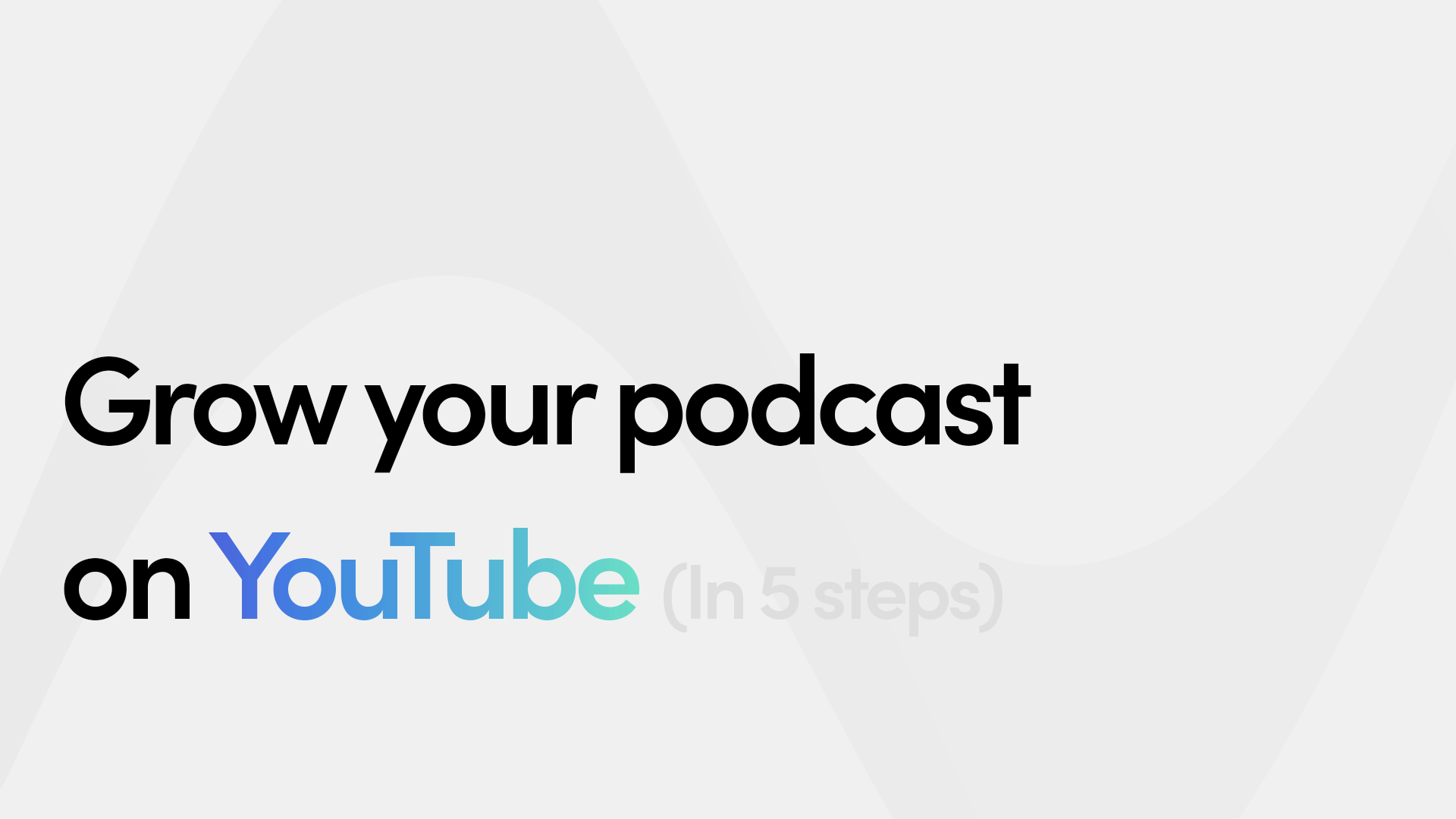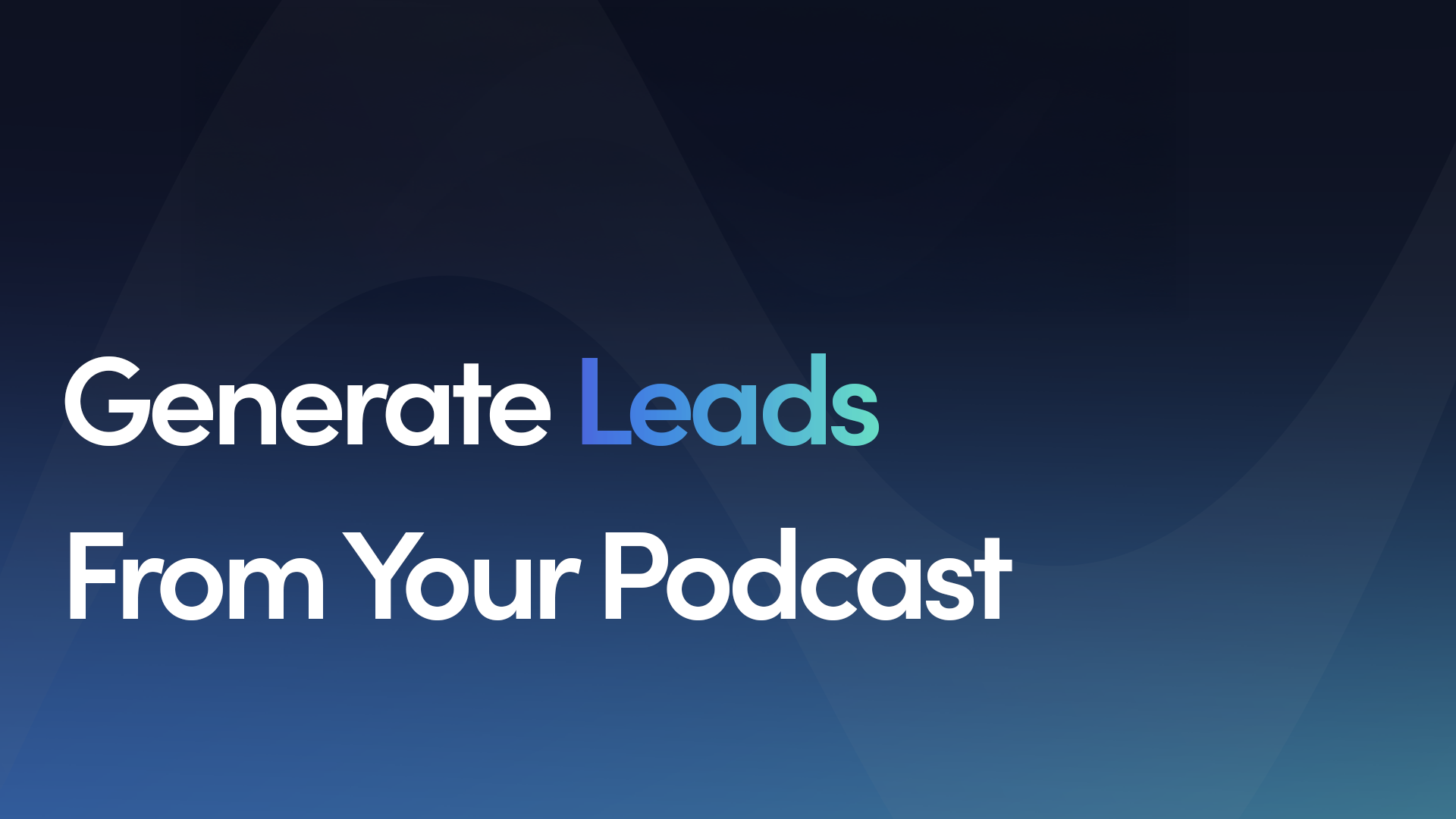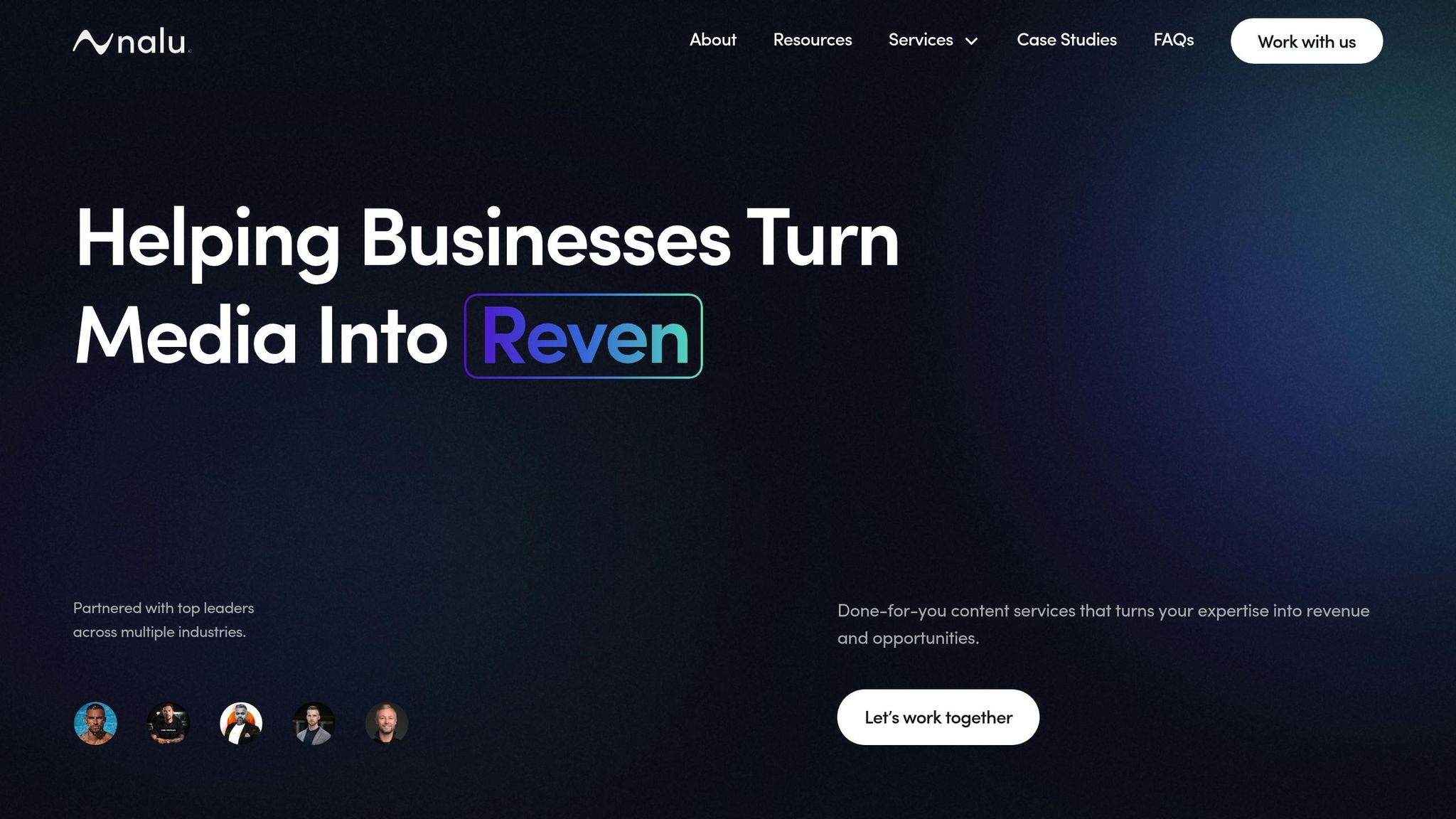Want to grow your podcast on YouTube? Good plan.
YouTube is now the #1 platform for educational content, meaning that it offers unmatched potential to reach new audiences who are interested in what you have to say.
The general gist of things in five simple steps:
- Get Clear on Your Path: Decide between full-length episodes, static visuals, or short clips to match your resources and audience preferences.
- Optimise for Search: Use SEO-friendly titles, descriptions, and tags to make your podcast discoverable.
- Leverage Short-Form Clips: Create engaging, shareable snippets (YouTube Shorts) to attract new viewers.
- Engage Your Audience: Encourage interaction through comments, likes, and subscriptions.
- Use Analytics to Improve: Track key metrics like watch time and retention to refine your content.
Quick Tip: Mix formats - post full episodes for loyal fans and short clips to draw in new viewers. By combining consistency, interaction, and data-driven adjustments, you can build a thriving podcast channel on YouTube.
How to Grow a Podcast on YouTube (2025 Masterclass)
Step 1: Get Clear on Your Plan
Before you think about cameras or editing, get clear on your plan. Most people rush straight into uploading, but the channels that grow are the ones that know exactly who they’re talking to and what success looks like.
So, who are you helping? Be specific. Maybe it’s SaaS founders trying to hire their first marketer. Maybe it’s real estate agents in Dubai who need better lead flow. The clearer you are, the easier it becomes to make content people actually search for.
Then decide how you’ll measure success. Do you want email sign-ups? Booked consultations? More branded searches in your industry? Knowing this shapes everything… from the titles you write to the calls-to-action you add at the end of your videos.
Finally, think about your content mix. You need different content for people at different stages of their journey with you. Simply put:
- Top-of-funnel content (50%) brings in new people. These are broad how-tos, beginner guides, and "Top 5" style videos. They get discovered fairly easy
- Middle-funnel content (30%) serves people who already know the basics but want deeper insights. This might be "How to book high-profile podcast guests" or "Advanced email marketing tactics for consultants." Less viral potential, but more valuable for building authority
- Bottom-funnel content (20%) shows your methods in action. Case studies of client results, or detailed breakdowns of how you solved specific problems. This content converts browsers into buyers.
Step 2: Optimise Your Podcast Videos for YouTube Search
Uploading great content is just the start if you want your videos to get noticed. As mentioned, YouTube offers massive potential - but only if your videos are optimised for search… It's also the go-to platform for 28% of weekly podcast listeners in the U.S., making it the most popular choice for podcast consumption. To tap into this audience, you need a solid strategy, starting with SEO-friendly titles and descriptions.
Write SEO-Friendly Titles and Descriptions
Start with your titles. Keep them short, specific, and keyword-rich. Lead with the outcome or the pain you’re solving, and keep it under 60 characters so it shows properly. A title like “10 Marketing mistakes every small business makes” works far better than something vague.
Your descriptions matter too. Focus on the first 125 characters, as that’s what shows in search results. Use this space to give a clear, compelling reason to click, then expand into timestamps, links, and a summary of what’s inside the video.
Use Tags and Playlists Effectively
Tags and playlists also help YouTube understand your content. Stick to relevant terms only, avoid padding, and group your episodes into playlists by theme or series. Research from Backlinko shows that videos with well-chosen tags tend to rank higher on YouTube.
"YouTube tags are critical for optimising a video for YouTube and search engines overall. They help web crawlers understand what a video's about and when it's a relevant result for specific searches."
– Conductor
Create Eye-Catching Thumbnails and Consistent Branding
Packaging (thumbnail & titles) can make or break your video. I’d go as far as saying that 50% of your efforts should be spent learning and understanding all the conventions that make someone click.
-
Title rules
- Lead with the outcome or the pain you solve.
- Use concrete numbers, time frames and qualifiers where useful.
- Keep it short and readable
-
Thumbnail rules
- One idea per image, 3 to 5 words max.
- Strong focal point, clean background, high contrast.
- The image should complement the title, not repeat it.
- If a friend saw it muted for two seconds, they should know what it is about.
Here are some good examples:


Beyond thumbnails, maintain consistent branding throughout your videos with intro graphics, lower thirds for guest names, and end screens promoting other episodes. These details not only enhance professionalism but also signal quality to YouTube’s algorithm.
| Optimisation Element | Best Practice | Character/Size Limit |
|---|---|---|
| Video Title | Use keywords; keep it engaging | Under 60 characters |
| Description | Highlight key info in the first 125 characters; add timestamps | No limit, but front-load key details |
| Tags | Combine general, specific, and common misspellings | 200–300 characters |
| Thumbnail Text | Use bold, high-contrast visuals | 3–4 words max |
Step 3: Create Short-Form Clips and Micro-Content
Now that you’ve nailed the long-form game, it’s time to dive into creating short-form content. These quick, engaging clips are the best tool to reach new audiences (fast). Why? They’re easier to digest and more shareable, all while driving viewers back to your full podcast episodes.
Tips for Crafting Effective Clips
Find those golden 30–90 second moments in your episodes that pack a punch - whether it’s a surprising insight, an emotional story, or actionable advice. These clips should stand on their own, requiring no extra context from the full episode.
Make sure your clips are visually engaging. Add clear captions and simple graphics so they’re effective even without sound. Use bold, easy-to-read fonts, and choose text colors that pop against the background.
Keep your clips short and snappy - 15 to 60 seconds is ideal, though you can stretch to 90 seconds if necessary. Start with a strong hook in the first three seconds, and wrap up with a call-to-action or a cliffhanger to leave viewers wanting more.
Focus on current trends and timeless topics. If your guest mentions a hot news item or a popular technique, create clips around those moments while they’re still relevant. Balance this with evergreen advice that can draw in viewers long after the episode airs.
Once your clips are ready, tailor them for YouTube Shorts to extend your reach even further.
How to Optimize Clips for YouTube Shorts

Consistency is key. Aim to post regularly across TikTok, YouTube and Instagram- daily, if possible - and batch-create clips from each episode to keep up the momentum.
| Platform | Optimal Length | Aspect Ratio | Best Content Type |
|---|---|---|---|
| YouTube Shorts | Under 60 seconds | 9:16 (vertical) | Hooks, key insights, cliffhangers |
| 30-90 seconds | 16:9 or 1:1 | Professional advice, industry insights | |
| Instagram Reels | 15-60 seconds | 9:16 (vertical) | Entertainment, behind-the-scenes |
| Instagram Stories | 15-30 seconds | 9:16 (vertical) | Quick tips, teasers |
I recently spoke to Jenny Hoyos, the “queen of short-form” who’s collected over 2.5 billion views from shorts alone. Check the episode out below if you’re interested in a deeper dive into what makes a short go viral!
sbb-itb-a205fab
Step 4: Build and Engage Your YouTube Audience
Publishing videos is only half the work. The real growth happens when you connect with the people watching.
Encourage Viewer Interaction
Make it a habit to invite your viewers to engage. Use on-screen graphics and spoken prompts to ask them to like your video, leave a comment, and subscribe to your channel. Don’t forget to mention the notification bell - it’s a great way to ensure they stay updated on your latest uploads. Reinforce these requests in your video descriptions and channel banners with clear, attention-grabbing calls-to-action.
Keep your comments section open. It’s a space for community discussions and a goldmine for feedback. Take the time to respond to comments, give shoutouts to your most active viewers, and ask specific questions during your episodes to spark conversation.
You can also run contests or giveaways to encourage interaction. These activities not only boost engagement but also make your audience feel valued and excited to participate.
Step 5: Track Performance and Improve Using YouTube Analytics
YouTube Analytics is where you learn what’s working and what’s not. Instead of guessing, you can see exactly how people engage with your videos.
Key Metrics to Monitor
Watch time tell you whether people are sticking around. If they drop off early, your intro might be too slow. If they stay through the middle but leave before the end, maybe your pacing needs work. Use these clues to make small, steady improvements.
For example, a video with 1,000 views and 8 minutes of average watch time is far more impactful than one with 2,000 views but only 2 minutes of engagement. The goal? Create content that keeps your audience watching from start to finish.
Click-through rate (CTR) shows how well your titles and thumbnails are performing. If the percentage is low, test new versions until you find what drives more clicks. Subscriber conversion tells you whether casual viewers are becoming loyal followers. If not, think about how you frame the value of subscribing in your videos.
Audience retention tells you where viewers drop off during your episodes. If you notice a pattern of people leaving at certain points, it’s a signal to examine those segments closely. Maybe the pacing slows down, or the content veers off-topic. Use this feedback to fine-tune your episodes and keep viewers engaged.
Subscriber conversion rate shows how effectively your content is turning viewers into subscribers. If this figure is low, it might be time to rethink how you communicate the value of your podcast. You could also experiment with when and how you ask viewers to subscribe during your episodes.
Understand Your Viewer Demographics
Analytics also show who your audience is and where they’re based. This helps you post at the right time and tailor your content to the people most likely to watch. Review your numbers monthly, make one or two adjustments, and keep moving forward.
- Age demographics can shape your style. For example, if your audience is younger, you might want to include trending topics or humor that resonates with them. On the flip side, if your viewers are older, focus on delivering more in-depth discussions.
- Geographic data helps you time your uploads. Knowing where your viewers are located means you can schedule your posts to go live when they’re most likely to be online.
- Gender breakdown can influence your choice of topics, guests, and collaborations. If your audience leans heavily male and you’d like to balance that, consider featuring female experts or exploring themes that appeal to a broader group.
Adjust Your Content Based on Data
Let your analytics guide your content decisions. If certain topics or formats consistently resonate with a specific demographic, double down on those. For example, if shorter, snappier episodes perform better, consider breaking up longer videos into smaller, more manageable parts. Likewise, if retention drops at certain moments, refine your pacing or structure to keep viewers hooked.
Make it a habit to review your analytics monthly. This regular check-in will help you spot trends, fine-tune your approach, and ensure your content stays aligned with what your audience loves.
Conclusion: Play the Long Game
There are no overnight wins with YouTube. Growth comes from consistent uploads, smart adjustments, and a clear plan. Show up every week, review your data, and improve one thing at a time. Over a few months you’ll see the first compounding gains, and over a year you’ll have built a library of content that brings you authority, trust, and pipeline.
Start with a solid who, what, and why. Knowing what you’re set out to achieve sets you up nicely with a clear roadmap ahead.
From there, focus on optimising your titles, tags, and thumbnails while leveraging short-form clips to attract organic growth.
Engagement is important. Interact with your viewers by responding to comments, stick to a consistent posting schedule, and use YouTube's community features to build loyalty. The reality is stark: almost half of all podcasts have only three or fewer episodes. Consistency is your play to staying relevant.
Data-driven adjustments can make a big improvement as well. With 80% of listeners sticking around for entire episodes, analysing drop-off points through YouTube Analytics can help you refine your content and better meet audience expectations.
Even slow, steady growth is a sign you're on the right track. The median monthly growth rate for podcasts is just 1.62%, so patience and persistence are key. Every small step forward validates your strategy.
FAQs
Should I post full episodes or short clips?
Both. Full episodes help you build deep trust, while short clips bring in new viewers. Use clips as teasers that direct people to your long-form content.
How do I make thumbnails and titles that work?
To catch attention and increase click-through rates, create thumbnails that are both eye-catching and aligned with your podcast's theme. Use bold text contrasting colors, and high-quality visuals that reflect the episode's topic. Keep the design clean and appealing - too much detail can overwhelm viewers.
When it comes to titles, focus on crafting short, keyword-rich phrases that pique curiosity. Adding context with brackets or parentheses, like "(Exclusive Tips)" or "[2023 Update]", can make your titles pop. Just make sure the title delivers on its promise and accurately represents the content.
Test different combinations of thumbnails and titles to figure out what your audience responds to best. Dive into your YouTube analytics regularly to spot patterns and fine-tune your strategy for stronger engagement.
How can I use YouTube Analytics to understand my audience and improve my podcast content?
YouTube Analytics offers a treasure trove of insights that can help you better understand your audience and fine-tune your podcast content. Metrics like watch time, audience retention, and engagement rates reveal which parts of your episodes resonate most with viewers. This data makes it easier to tweak your content to keep people watching longer.
The Audience tab is another goldmine of information, providing details like age, gender, and location of your viewers. With this data, you can shape your podcast topics and delivery style to align with your audience's preferences. Regularly diving into these analytics not only helps you create more focused and engaging episodes but also sets the stage for growing your podcast’s reach over time.






